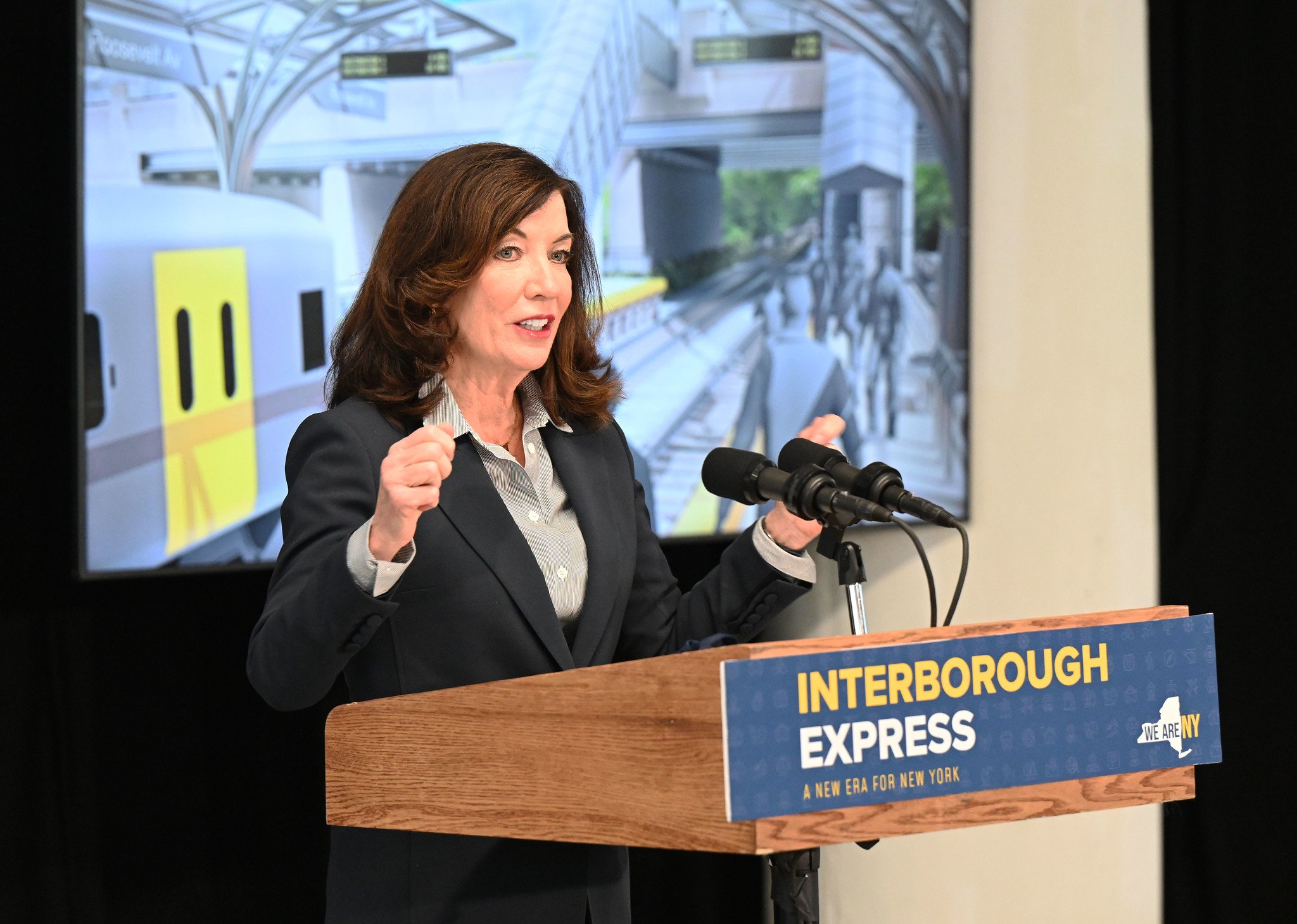Interborough Express is feasible, MTA says in new study
/Governor Kathy Hochul announced Thursday the results of a feasibility study on the proposed Interborough Express, which would run from Queens to Brooklyn. Photo via the Governor’s Office/Flickr
By Jacob Kaye
The Metropolitan Transportation Authority and Governor Kathy Hochul said Thursday that there’s nothing standing in the way of building a new trail line from Northwest Queens to Southern Brooklyn.
Hochul and the MTA released a study Thursday on the recently proposed Interborough Express, which would be built on unused rail in Queens and Brooklyn. The study determined that the commuter rail would indeed be feasible, bringing up to 17 stations throughout the two boroughs.
“Infrastructure is all about connection, and with the Interborough Express we can connect people to their family and friends while also improving their quality of life,” Hochul said. “The Interborough Express will connect Brooklyn and Queens, not only shaving time off commutes but also making it easier to connect to subway lines across the route. With the completion of the feasibility study, we can move forward to the next phase of this project and bring us one step closer to making the Interborough Express a reality for New Yorkers.”
The year-long feasibility study of the rail, which was originally announced during Hochul’s State of the State speech earlier this month, notes that the Interborough Express has the “potential to be transformative,” an idea Queens Borough President Donovan Richards agrees with.
“We’re talking about a single 40-minute ride from end to end, and that is a true game changer for thousands of people,” Richards said. “We need outside the box solutions to problems that existed well before the pandemic. We need innovative thinking to address the issues the pandemic worsened. The Interborough Express is a perfect example of that kind of thinking.”
The plan also received support from a number of Queens lawmakers including Assemblymembers Catalina Cruz Jessica Gonzalez-Rojas, City Councilmembers Adrienne Adams, Shekar Krishnan and Robert Holden and State Senator Joseph Addabbo.
The line stands to service areas where 71 percent of the residents are people of color and where 33 percent are below 1.5 times the federal poverty line, according to the study.
The rail line would run through Ridgewood, Middle Village, Maspeth, Elmhurst, Jackson Heights, Bay Ridge, Sunset Park, Borough Park, Kensington, Midwood, Flatbush, Flatlands, New Lots, Brownsville, East New York and Bushwick.
The feasibility study looked at three potential methods of transportation for the line – subway, light rail and bus rapid transit.
Depending on which mode of transportation ultimately is chosen, the MTA says the line could service between 74,000 and 88,000 people per day, many of whom currently live in transportation deserts. The line could potentially connect with the 2, 3, 5, 7, A, B, C, D, E, F, J, L, M, N, Q, R and Z subway lines, as well as the Long Island Rail Road.
The fastest of the three options would be the light rail, the MTA said, which would run from end to end in 39 minutes. It is also potentially the costliest option.
The conventional rail option, which most resembles the subway, would have the longest run time and “has the most construction complexity and would require the most private property acquisition,” according to the MTA.
The third option, the cheapest of the three, would be to create a bus-only corridor that would feature electric buses moving from station to station. The bus line would be built above freight rail – the subway line would also allow for freight rail to also operate along the line. Despite the best price, the bus option would likely feature the lowest ridership numbers, according to the MTA.
While the feasibility study came only weeks after the idea for the rail was originally announced, there is currently no timeline on when the rail will be fully operational.
With the study complete, the MTA will begin to conduct an environmental review, which will include gathering comments from members of the public, elected officials and other stakeholders.




